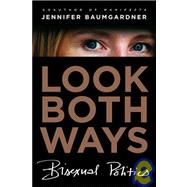
Note: Supplemental materials are not guaranteed with Rental or Used book purchases.
Purchase Benefits
What is included with this book?
| First look | p. 11 |
| What is bisexuality? | p. 37 |
| The woman-identified woman : bisexuality and the second wave | p. 69 |
| Bisexuality now : the Ani phenomenon | p. 97 |
| Gay expectations | p. 127 |
| But is it sex? | p. 147 |
| Men : can't live with them | p. 167 |
| Sexual tension : bisexual women and lesbians | p. 187 |
| On being entitled : bisexual politics | p. 207 |
| Table of Contents provided by Blackwell. All Rights Reserved. |
The New copy of this book will include any supplemental materials advertised. Please check the title of the book to determine if it should include any access cards, study guides, lab manuals, CDs, etc.
The Used, Rental and eBook copies of this book are not guaranteed to include any supplemental materials. Typically, only the book itself is included. This is true even if the title states it includes any access cards, study guides, lab manuals, CDs, etc.
Excerpted from Look Both Ways: Bisexual Politics by Jennifer Baumgardner
All rights reserved by the original copyright owners. Excerpts are provided for display purposes only and may not be reproduced, reprinted or distributed without the written permission of the publisher.